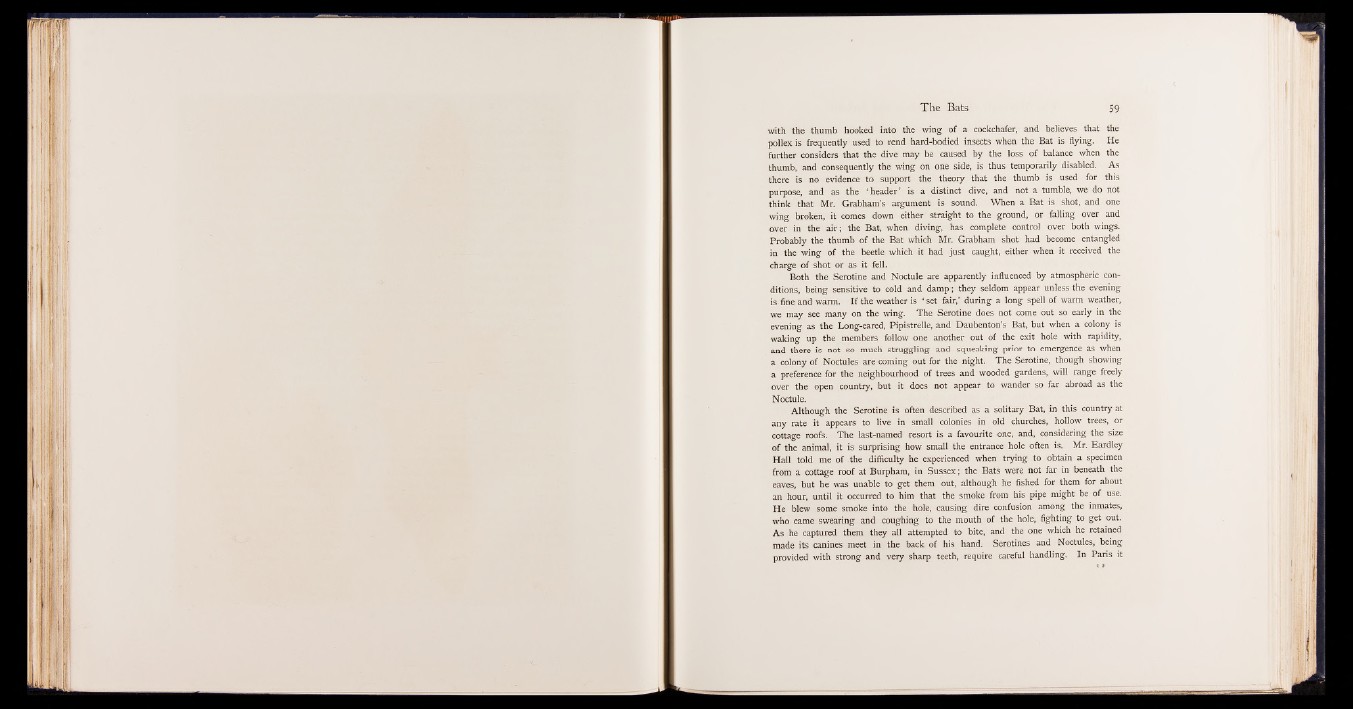
The Bats 5 9
with the thumb hooked into the wing of a cockchafer, and believes that the
pollex is frequently used to rend hard-bodied insects when the Bat is flying. He
further considers that the dive may be caused by the loss of balance when the
thumb, and consequently the wing on one side, is thus temporarily disabled. As
there is no evidence to support the theory that the thumb is used for this
purpose, and as the ‘ header’ is a distinct dive, and not a tumble, we do not
think that Mr. Grabham’s argument is sound. When a Bat is shot, and one
wing broken, it comes down either straight to the ground, or falling over and
over in the air; the Bat, when diving, has complete control over both wings.
Probably the thumb of the Bat which Mr. Grabham shot had become entangled
in the wing of the beetle which it had just caught, either when it received the
charge of shot or as it fell.
Both the Serotine and Noctule are apparently influenced by atmospheric conditions,
being sensitive to cold and damp; they seldom appear unless the evening
is fine and warm. If the weather is ‘ set fair,’ during a long spell of warm weather,
we may see many on the wing. The Serotine does not come out so early in the
evening as the Long-eared, Pipistrelle, and Daubenton’s Bat, but when a colony is
waking up the members follow one another out of the exit hole with rapidity,
and there is not so much struggling and squeaking prior to emergence as when
a colony of Noctules are coming out for the night. The Serotine, though showing
a preference for the neighbourhood of trees and wooded gardens, will range freely
over the open country, but it does not appear to wander so far abroad as the
Noctule.
Although the Serotine is often described as a solitary Bat, in this country at
any rate it appears to live in small colonies in old churches, hollow trees, or
cottage roofs. The last-named resort is a favourite one, and, considering the size
of the animal, it is surprising how small the entrance hole often is. Mr. Eardley
Hall told me of the difficulty he experienced when trying to obtain a specimen
from a cottage roof at Burpham, in Sussex; the Bats were not far in beneath the
eaves, but he was unable to get them out, although he fished for them for about
an hour, until it occurred to him that the smoke from his pipe might be of use.
He blew some smoke into the hole, causing dire confusion among the inmates,
who came swearing and coughing to the mouth of the hole, fighting to get out.
As he captured them they all attempted to bite, and the one which he retained
made its canines meet in the back of his hand. Serotines and Noctules, being
provided with strong and very sharp teeth, require careful handling. In Paris it